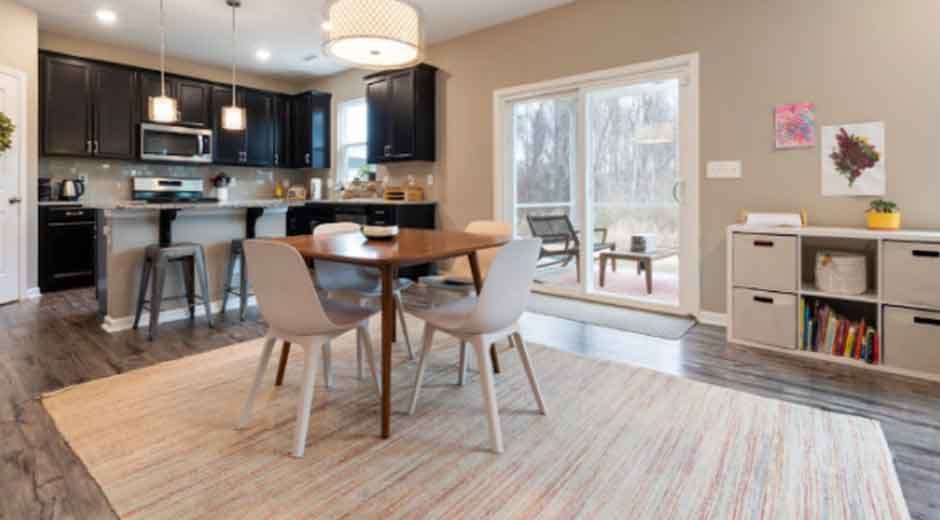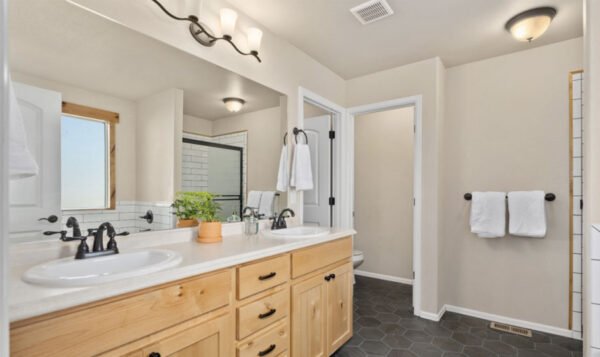What a Well-Sealed Home Feels Like (and Why Yours Might Not Be One)

In places like Springfield, OR, where winters can get cold and summers warm up quickly, energy loss makes a real difference. You might turn up the heat or blast the air conditioning, but the temperature still doesn’t feel right. Drafts sneak in. One room feels perfect, while another stays uncomfortable no matter what.
If your home isn’t properly sealed, you’ll likely notice signs—but only if you know what to look for. This article explains what a well-sealed home feels like and why yours might be falling short.
We’ll break down what comfort should feel like, how to spot problems, and why fixing them matters.
1. Your HVAC Isn’t Always Running
If your heating or cooling system seems like it’s always running, something might be wrong with how your home holds air. When outside air leaks in, your HVAC has to work harder to make up the difference.
This leads to more wear on your system and higher energy costs. Even if your thermostat is set to a normal level, constant operation means your system is trying to fix a problem it can’t control.
An HVAC expert can test your system and look for airflow problems. They’ll check if leaks or poor sealing are causing your unit to work overtime. Look up HVAC company Springfield, OR to find the right professional.
2. Drafts Don’t Sneak In Around Doors or Windows
Drafts are one of the most obvious signs of a poorly sealed home. If you feel air moving near windows or doors when they’re closed, there’s likely a leak. It might not seem like much, but even small gaps can let in a lot of outdoor air over time.
Old weather stripping, cracked seals, or shifting door frames are common reasons for these leaks. Replacing seals or adding door sweeps can help, but sometimes a full inspection is needed to find hidden spots.
In a properly sealed home, you won’t feel any drafts—not even when standing right next to a window on a windy day.
3. Walls and Floors Don’t Feel Cold in the Winter
When your home is sealed well, floors and walls won’t feel like they’re drawing in the cold from outside. But in a leaky home, surfaces can get chilly, especially near the edges or in older parts of the house.
This often means the insulation is thin or the air barrier isn’t doing its job. Cold air seeps in and cools the materials inside. Even if your heater is working hard, those cold surfaces can make you feel uncomfortable.
Improving sealing around exterior walls and upgrading insulation helps hold warmth inside and keeps those cold spots from creeping in.
4. Energy Bills Stay Predictable
Unexpected spikes in your heating or cooling bills often point to poor sealing. When outside air keeps sneaking in, your system has to use more energy just to maintain a steady temperature.
Even if your habits haven’t changed—same thermostat setting, same use—leaky spots can drive your energy costs up. Seasonal shifts make this worse. You might notice higher bills in winter or summer, even if the weather isn’t extreme.
Homes that are sealed well don’t just feel better—they cost less to run. That’s because they keep the inside air in and the outside air out, right where it belongs.
5. Outside Noise Doesn’t Fill the Room
One thing people don’t often connect to home sealing is sound. But the same small gaps that let air in also let sound through. If you can hear cars passing, dogs barking, or people talking outside—even when your windows and doors are shut—that’s a sign your home isn’t sealed well.
A sealed home muffles outside noise. It won’t make your space silent, but it will reduce how much of the outside world gets in. This makes the home feel more peaceful, especially in busy neighborhoods. Adding insulation and sealing air leaks not only helps with comfort but also cuts down on noise.
6. You Don’t Battle Constant Dust Buildup
If you notice that surfaces in your home get dusty again just days after cleaning, there could be a sealing issue. Dust from outside finds its way in through small openings in your attic, walls, or ducts. It can come from the street, your crawlspace, or even your garage.
Good sealing helps filter the air that enters your home. It keeps unfiltered outdoor particles from making their way inside. A sealed home stays cleaner longer. This helps people with allergies and makes the home feel healthier overall.
7. Humidity Levels Stay in a Comfortable Range
Too much moisture in the air can lead to mold, musty smells, and sticky rooms. Too little can cause dry skin, cracked wood, and other issues. In a sealed home, humidity levels are easier to control because outside air isn’t constantly interfering with indoor conditions.
When your home is full of air leaks, moisture sneaks in—or out—depending on the season. That means your heating and cooling system has to work harder to balance it. Sealing the home lets your system maintain better control, keeping things comfortable and stable.
8. No Musty or Damp Smells Linger Indoors
If you’ve ever walked into a room and noticed a musty or stale smell, there may be hidden air leaks. Air coming in from crawlspaces, basements, or attics can carry moisture, odors, and even mold spores. Over time, that smell settles into furniture, carpets, and walls.
When a home is sealed, the air smells cleaner. That’s because it’s not pulling in damp air from places it shouldn’t. Sealing trouble spots and making sure the home has proper ventilation helps stop those smells before they spread.
9. A Blower Door Test Confirms It All
If you’re still unsure whether your home is sealed well, a blower door test gives you a clear answer. This test uses a fan to pull air out of the house, which helps reveal where air leaks are hiding. It measures how airtight the home really is.
Many energy professionals offer this service as part of an energy audit. It’s the best way to find out if sealing problems exist, even in spots that are hard to see. Once you know where the leaks are, you can fix them and start seeing the benefits quickly.
A well-sealed home offers more than just lower bills. It makes your space quieter, cleaner, and more comfortable. You’ll notice better air quality, steady temperatures, and fewer signs of outdoor air sneaking in.
If your home doesn’t match the experiences we’ve described, it may be time to take a closer look. Start with the areas you can check yourself—like door drafts or noisy windows. For a full picture, schedule an energy audit or talk to a home performance expert.
Fixing leaks now saves money later—and helps your home feel the way it should every day.



